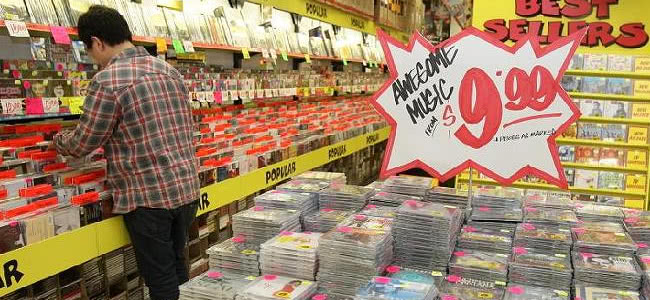Just as the Australian Government is looking to subpoena tech giants like Microsoft, Apple and Adobe over their pricing policies, claiming that they’re overcharging for digital content and music downloads, a new report has surfaced demonstrating that music is in fact cheaper now than it has ever been.
The Trichordist has divulged some interesting statistics to further shed light on the topic du jour surrounding musicians and the price we put on purchasing music in the technological age we live in today.
Never fear, if you haven’t had that second cup of coffee to understand the graphs and maths behind it all, music journalist and broadcaster Alan Cross picked up on the main points as to why owning music these days is actually dirt cheap compared to ‘back in the day’.
For example, when The Beatles released their first album in the USA in 1964, it cost $4.98 to buy. If you adjust that price for inflation, that’s $35 for a 32 minute album recorded in mono. These days, however, a typical album bought off iTunes is $9.99. If you take that price back to 1964, that album would end up costing you an even more measly $1.35.
Simple as that. Or is it?
With more music than ever out there and the distribution for music becoming instantly access on a global scale – with thanks to digital music stores and streaming services – the laws of supply and demand have driven down the price of what people are willing to pay for music.
The complaint that music’s too expensive may have been a valid argument in the late 90s however, when the onset of illegal exploitation of content, without compensation began to reach its peak, forcing labels to up the price of music to compensate. A practise that began at the turn of the century.
“The 90s saw the introduction of DVDs, home computers became household items, people started paying for internet service, and cell phones began to be common place… each offering competition to music sales, but not free music itself,” says Thomas Silverman, founder of hip hop label Tommy Boy Records.
Also occurring in the late 90s was the onset of Napster and affordable broadband. Though many align the decline of recorded music sales to a la carte song sales and online sites such as iTunes, which didn’t launch until the end of 2003, these didn’t accelerate the decline of recorded music sales – but nor did it slow it.
Today however, online streaming services like Spotify and Deezer are looking to overtake music piracy as a legitimate form of digital music access.
But for an industry that reportedly earns over $1 billion dollars for the music world, many artists and musicians are calling the streaming services out on the lack of royalty payments. Indie darlings Grizzly Bear recently declared that Spotify “doesn’t help bands”. The band tweeted: “Spotify might be good for exposure but after about 10 thousand plays we got approximately 10 dollars. It provides a great service for people. Does it help a band? No more than downloading from Lime Wire.”
It’s gone as far as Rdio launching a new program where they directly pay artists $10 for each new user they ‘sign up’, the first of its kind here in Australia, to ease some monetary nerves felt by musicians on the topic of payment.
The new information shows that there’s no denying that purchasing music today is dirt cheap compared to what it was a few decades ago. But, as Alan Cross points out however, the easier and more accessible music becomes, the lower its ascribed value by the public.
In today’s continuing troubled economical climate and the urge for convenient – and immediate – access to music, perhaps the majority of buyers won’t be changing their values any time soon.

































